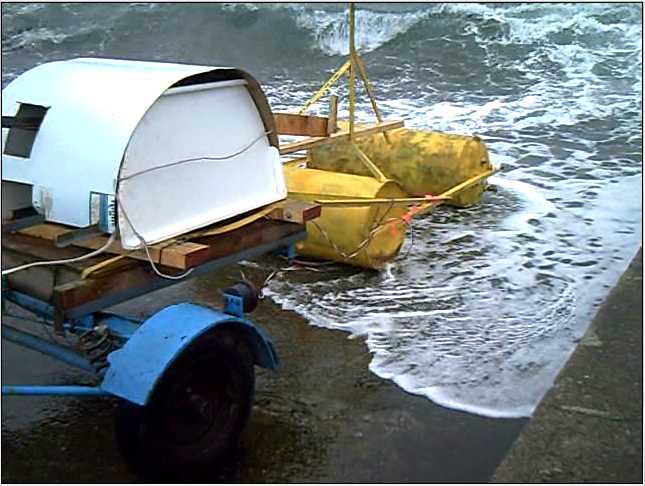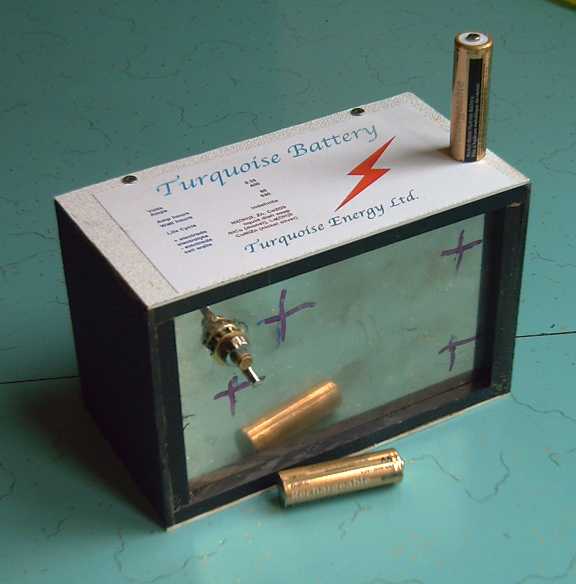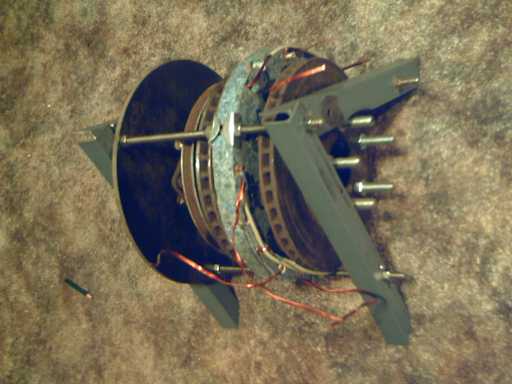Clean Renewable Energy Projects
Report
by Craig Carmichael
researcher, award winning inventor and product
developer
March 6th, 2008
I seem to have had key pieces to the future of clean energy
dumped unexpectedly in my lap all within the last two years, and it's
all coming together about now. If these things can be successfully
commercialized, they could potentially quickly solve our two most
basic and seemingly intractable energy problems. Here's (a) a way to
harness an abundant source of clean renewable energy: ocean waves, and
(b) the rapid elimination of the gross burning of petroleum products
for transportation energy, by retrofit "plug-in hybrid"
electrification of vehicles already in use.
First in this amazing chain of designs, I started doing a
floating ocean wave powered generator in spring 2006. Then I sat on it
for over a year because no one seemed interested. Calls and emails
about it to those who I thought should have been most excited in
responsible positions went unanswered. Finally I got to show the
design to an official at the BC Ministry of Energy in October 2007. He
told me, in essence, that it was the most promising looking wave power
design to cross his desk. Based on that, I went ahead and made the
prototype on my own time and resources. It was finished in January and
currently awaits suitable weather for a successful test. Problems in
the three test attempts to date were: a construction oversight, an
unseen jammed drive chain, and on the last try, not enough waves to
spin it. So, it hasn't had a chance to run yet.

The "proof of concept" wave power
capture unit at Cattle Point with some nice waves. Anchored floating
operational units, preferably of durable and low maintenance
ferrocement construction with expanded foam buoyancy, would have five
larger but similar power capture float structures and mechanisms in a
robustly built star pattern, which would make them almost unbreakable,
unsinkable and unflippable in storms.
Economic calculations indicate that a wave power "IPP"
company based on these designs should be able to offer BC Hydro wave
electricity at a lower price than other technologies, eg 5 cents per
KWH where the norm is now 7-8. That would mean stationary Hydro bills
from clean sustainable energy, instead of gradually rising
rates.
For the wave power test prototype, I made a permanent magnet
generator that I gradually realized after testing its specs would make
an ideal electric car drive motor. A pair of them, mounted directly in
two wheels on most
existing cars, could electrify them. No
gears, no transmission. The wheels would stick out just 2.5 inches
extra with the motors inside. After charging the batteries at any
electrical outlet, they would be able to drive 40 kilometers or so for
about a penny a kilometer before turning on the engine, covering most
people's usual daily driving. How much oil would that save?
The new axial flux electric machine design,
the Turquoise Energy MPMG now under the hood of the wave power
generator. Very similar units with flat magnet rotors could turn
today's cars into plug-in electric hybrids via an add-on
retrofit.
With relatively light, cheap motors that disrupt nothing of a
car's existing systems, controls can be created with known
techniques. The crux, then, to turning today's cars - your car -
into plug-in hybrids, is a suitable battery, one that isn't too bulky
or heavy to put in the trunk and lasts many years. But I found nothing
decent for sale bigger than a Ni-MH "D" cell. It looked like
it would take several thousand dollars worth of them, and even at that
they would only last 1000 recharges.
In early January I checked all over the internet and found a
number of great battery ideas. So I proceeded to synthesize them along
with some original ideas of my own into a new large and simple battery
design. I ordered a lot of strange chemicals and set to work. I
discarded things that didn't work out or seemed too difficult, and
kept the winners and found more of them. I've ended up with a battery
that's considerably more economical and with around twice the energy
storage of what I originally set out to make. It's an economical
nickel-metal hydride variant battery design with very good energy
density, extra high current drive, and it should last a vast number of
recharges. This is a clean, green battery. If it should ever end up in
a landfill, it has no environmentally toxic metals or materials. The
electrolyte is dish soap.

I've just made the first 6V Turquoise
Battery. It's the equivalent of perhaps 100 of the Ni-MH AA cells
shown with it. Two should be equivalent to a much larger and heavier
regular car battery and should, at the very least, outlast the
car.
Two dozen six volters like this or a twelve-pack of twelve volt
batteries in the trunk will make a 144 volt, 7 KWH hybrid car battery
that will take your car 30-45 Km on 45 cents worth of
electricity.
A good way to see these projects succeed commercially rather than
rust on the
shelf is to invest in them. Nothing like this can be done without
money, and indeed I've gone into debt to finance these prototypes
without any sort of pay just because they're what I see as the future.
Sufficient resources and human energy can accomplish great things.
Anyone interested, please contact me.
Turquoise Energy Ltd.
Victoria BC Canada



